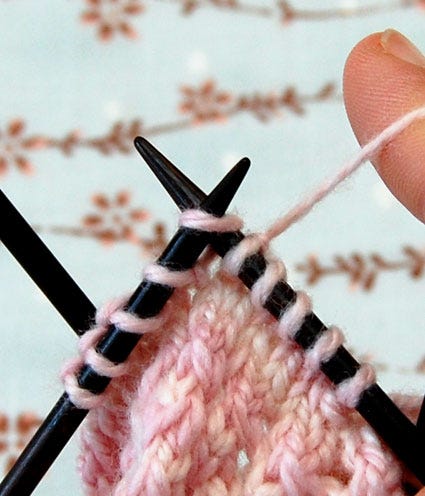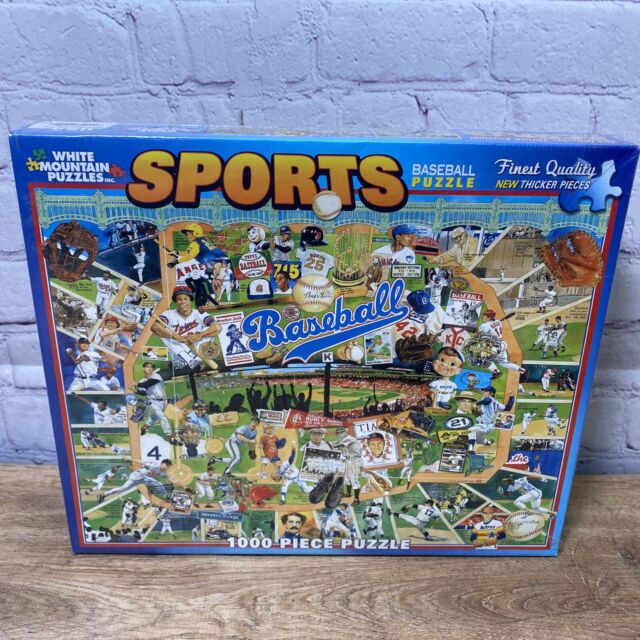
Knitting casting on may be a term you have seen in knitting. This refers to adding stitches to your knitting without using the ones you already have. As its name suggests, it has a separate lower edge. You can cast on or block. You will be able to cast on a stitch if you've done it before. If you're new to knitting, these simple instructions will help you to learn the basics.
Loop cast-on
A knitting loop is created by drawing the working yarn from one end of the knitting loop. This is the easiest method to add stitches to your knitted project. It's ideal for creating seamless toys and top-down mitts. This technique is also helpful when working with centre-out shawls and blankets. A loop cast-on can be used with any size needle, so make sure you select the right size.
The cast-on of the disappearing loop is more bulky than other castings and is comparable to crochet's magic circles. To cast-on a circular piece of yarn, you first need to make a loop from your working yarn. Cross the short end over that at the ball end. If you knit, the loop will disappear. Use your fingers to hold the work yarn. Start knitting after creating the loop. Continue knitting your piece.

German Twisted cast on
If you are new at knitting, it is likely that you don't know the difference between a normal and a German Twisted casting-on. German twisted cast-ons are knit with a circular needle and are known to have a stretchy edge. It can be tricky to get the right cast-on edge without following certain steps. This article will explain the difference between a standard and German twisted cast-on edge and give you a better understanding of both.
The German twisted cast on, also known by the Old Norwegian caston, is a great alternative to the traditional long-tail casting. It's a bit more stretchy, and it is ideal for projects that require stretch like top-down socks. It is possible to practice the long-tail method of casting on to learn how to do a German Twisted Cast-On. The easiest way to learn how it works is to place the yarn on your needle, and then hold it in the slingshot.
Cast-on with long tail
A long tail knitting casting-on works the same way as a traditional casting-on but is more versatile. It can also be used for double knitting and colorwork. We will be exploring the many uses this technique has. Before you start learning how to knit, it is important that you have a basic understanding of knitting. After you know how to use it, you'll find it your go-to method for casting on many stitches.
A long tail-cast-on is the preferred method of knitting. This uses a circular needle, which is held in one hand. It can be tricky to know how much yarn to purchase so measure carefully. It is a good rule to cast on 3x the width of your project plus 6inches / 15cm. To determine how much yarn you will need, count the number of stitches you have to cast on.

Backward loop cast on
The Backward loop is a convenient way to add rows to the middle. To form an e at the back of your stitch, twist the tail of the yarn closest to you. You should work from the lower right corner to the upper left corner of the stitch. Then, knit the st like any other st. You can repeat these steps as many times as the pattern requires.
You may see a tiny hole in your knitting when you make 1 via backwards loop cast-on. This is normal, and you will need to tighten the newly formed stitch with working yarn. This is an excellent choice for knitting socks with an underarm seam or mittens using a backward loop cast on. This cast-on is not good for adding more than a handful of stitches, as it tends loosens the join. You can substitute the backward loop cast on with M1 increases.
FAQ
Why do we need hobbies?
Hobbies are an important part of our lives because they give us time to relax, unwind, think creatively, exercise, socialize and enjoy ourselves. These hobbies offer us the opportunity to learn new skills, develop valuable lifelong interests, and provide opportunities for us to do both.
Hobbies give us meaning and purpose in life.
They can be a great way of spending time without having to do anything else.
They're even fun!
If you don't have time for a hobby, then you probably don't have time for anything else either.
Look at all the options. Perhaps you should get a hobby started today if you don’t already have one.
What are educational hobbies, you ask?
An educational hobby can be defined as an activity in which you learn something through doing it. This could include anything from learning to play an instrument to playing sports.
It should be enjoyable and have fun. It doesn't have to be done all the time. However, if you get bored of it, you should think about other things you can do instead.
You should also make sure that you are not spending too much money on these activities. It could end up costing your more than it's worth.
What is a good hobby for kids?
Any activity that kids enjoy as a hobby is something they do outside of the normal routine. Some kids like to build things, draw, paint, write, or play with toys.
Many parents worry that their children will get into trouble if they're allowed to do whatever they want. This isn't necessarily true, though. They won't get into trouble if your child is safe and does not cause harm to others or themselves.
It is important to remember that people may not always choose to do what they enjoy. For example, if they love drawing pictures but they hate writing, then they may decide to draw pictures instead of writing.
There are many different hobbies, so it is up to you which one you love the most.
What hobbies are in fashion right now
Popularity is not always a positive thing. Popularity can often be used to excuse mediocrity. The fact is that most people do not have time to pursue any hobby they want. They are always too busy to earn a living. What do you do with your spare time? You could open a business.
It's not easy. It takes a lot of work to make your dream a reality.
If you are looking for something more than running a business you might consider starting a hobby.
Hobbies are not limited to creative pursuits. There are many hobbies. Some of these include:
-
Gardening
-
Cooking
-
Photography
-
Reading
How much does a hobby cost you?
A hobby costs nothing but time. If you're serious about it, however, it may take you many years to reach your goals.
But there is one thing you can do to help yourself. It's called "passion". If you have passion about something, it will make it easier for you to work hard.
You may become addicted to the activity once you have put in enough hours. Here is the fun part! Because now you are doing something you enjoy, and you are getting better at it all the time. By the end of the year you'll have probably made a lot of progress.
So don't worry too much about how long it takes. You can just try it. You might be surprised by what you find!
Can I make money by my hobby?
You can make extra money by taking up hobbies.
If you are passionate enough about your hobby to decide to sell it,
For example, if you collect stamps, you may want to set up a website selling rare stamps.
You can also make extra income by selling and buying stamps.
Another option would be to create a YouTube channel where you talk about your hobby.
This allows you to share your passion with others and potentially generate additional revenue by offering premium content.
What are the best ways to find a hobby?
It can feel overwhelming to start your search for a hobby when you first begin.
You might be thinking "I'm not very creative" or "I am terrible at sports" or even "I don’t know anything”.
There is a good chance that you have some experience with hobbies.
It's just that you haven't realized it yet.
Take a look at the contents of your home. What amount of stuff do you have?
Do you have any old toys lying around?
Perhaps you own a collection or magazines.
You might have always wanted the ability to cook.
Or perhaps you would just like to learn how to play the guitar again.
Whatever it is you're interested in, you can make it a hobby.
It is important to recognize that you already have a lot of experience to draw from.
You'll find a hobby that fits your lifestyle once you do.
Statistics
- The Role of the Mind in Sex, Dating, and Love: Men in the “humor” condition received phone numbers from 42.9% of the female participants and were refused 57.1% of the time. (time.com)
- Much of this decline reflects the fact that teens are less likely to work today than in the past; among employed teens, the amount of time spent working is not much different now than it was around 2005. (pewresearch.org)
- The intensity of the dialogue partners' bond at the end of the forty-five-minute vulnerability interaction was rated as closer than the closest relationship in the lives of 30 percent of similar students. (time.com)
- I am 100% biologically a woman (discover.hubpages.com)
- Almost 80% of people claim to have no hobby. (hobbylark.com)
External Links
How To
How to learn a musical Instrument
If you want to learn how to play music, there are many ways to do so. You could either go to a school, buy a book, take lessons from someone who plays an instrument, watch videos online, etc. However, if you decide to find your own way to learn, here are some tips and tricks that might help you out.
-
Find something that interests you. Try another instrument if you don't love any of the ones you see. If you don't like playing an instrument, it would be difficult to learn how to play it.
-
Be patient. Learning anything new takes some time. Do not expect to be able to master every aspect of the subject immediately. Instead, keep practicing every day.
-
Practice regularly. Even when you feel tired, continue practicing. This will ensure you don't forget what lessons you have just learned.
-
Choose a good place to practice. It is best to find a quiet space where you will not disturb others. Also, make sure that there aren't too many distractions. For example, avoid having loud music playing nearby.
-
Have fun! Music should be enjoyed. You should have fun practicing music. It will make you more motivated to keep going.
-
Set goals. You will know what you need to do if you have goals. Failure is not an option.
-
Keep track of your progress. Note down your successes and mistakes. Doing so will help you improve over time.
-
Take breaks. Sometimes, you will just need to stop for a while. Taking breaks can give you the time to think.
-
Ask questions. Ask for help if you are unsure or have questions about certain aspects of the instrument. They may be willing to help.
-
Listening is the best way to learn. Many musicians learn by listening to the songs they love and then imitate them. This allows them to grasp the basic concepts of the song.
-
Read books. You will learn more from reading books than you can by watching videos or attending classes. Books contain information you will not find anywhere else.
-
Get involved in a band. Playing with others forces you to practice more. You will also meet others with similar interests to yours.
-
You can watch tutorials. Tutorials are videos that provide detailed explanations of various topics. Tutorials are short videos that focus on one part of the instrument. You can learn difficult parts of the instrument by watching tutorials.
-
You can try different methods. Some people prefer to learn through lectures. Others prefer to read. Experiment until you find what works best for you.
-
Practice makes perfect. You don't become an expert overnight. You must work hard to become proficient enough to do well.
-
You can learn from other musicians. Listening to your fellow musicians perform their favourite songs can help you learn quicker.